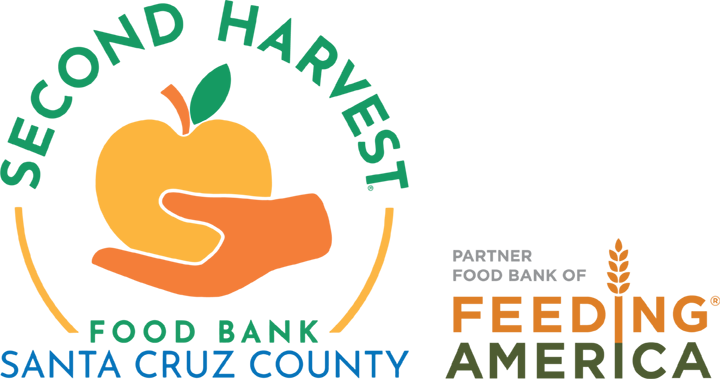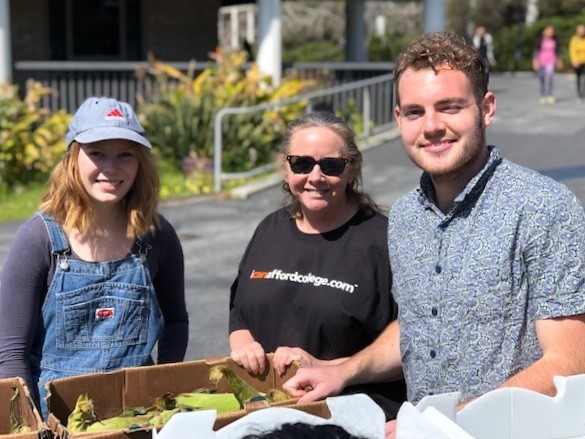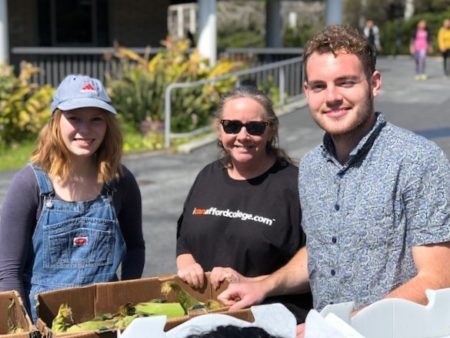
It is a sunny Thursday morning in Aptos, California, and a large truck from Second Harvest Food Bank Santa Cruz drives onto the campus of Cabrillo College. Boxes of fresh produce – carrots, watermelons, potatoes, lettuce, corn, and tomatoes – are unloaded by student volunteers and brought into the upper quad. A sandwich board sign with large letters announcing “Free Produce” at the “Cabrillo Fresh Market” is strategically placed in the middle of the main thoroughfare, hoping to attract the attention of passers-by on their way to and from class. Anyone within the Cabrillo community is welcome. The first hour is open to students only, and then both staff and faculty are invited to stop and “shop”, too. Everything offered at the market is free of charge.
Karen Reyes, Director of Student Resources and the person in charge here, opens up a box of lettuce and shows a young man where to place the other vegetables on the folding tables. “This is a definite team effort,” says Karen. “One of our Anthropology instructors has created an opportunity for her students to receive credit for volunteering, and, boy, are they signing up! They help us staff the market, which I really appreciate.”
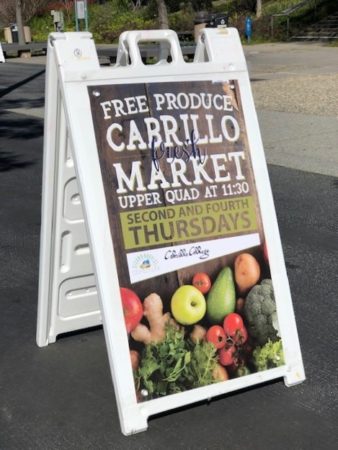
The campus is quiet at the moment, but the dozens of boxes of produce indicate that a large crowd is anticipated. Explains Karen, “This is the calm before the storm. Two weeks ago we distributed over 1,600 lbs. of food to over 200 people in less than 2 hours.”
The Hope Center for College surveyed almost 40,000 students at 57 community colleges in California and found that nearly 50% of the those surveyed had been food insecure in the prior 30 days.
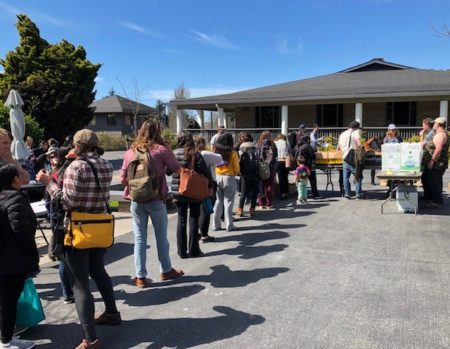
The Fresh Market food distribution program, which was inspired by a similar program at UCSC, has been a collaborative effort between Karen and Joel Campos, Director of Community Outreach at Second Harvest Food Bank.
Says Joel, “When we first started out, we were trying to help students sign up for CalFresh through the Resource Center. We thought about having a pantry there because we knew that many of them struggled with hunger. But the idea didn’t really take off because they had to come to us. That’s why we switched our approach and brought the market to them. That’s when everything changed.”
Class is over and the quad fills quickly.
More volunteers, like Jamie Alonzo, Dean of Natural and Applied Sciences, arrive and find their places behind the tables, ready to assist visitors and keep the produce stocked. When asked why he volunteers at the Fresh Market, Jamie says he wants to help out the students in any way he can. He says that 33% of community college students do not complete their education although they have the grades to do so, but food insecurity and the area’s high cost of living complicate what may already be a difficult home situation. “Many students come to school with what I call, “Life PTSD”, Jamie says. “This market is one of the ways that we can keep life from getting in the way of their success.”
The market is open twice a month, every 2nd and 4th Thursday. Student Conner Van Valer expresses the same sentiment as many of the other students waiting in line.
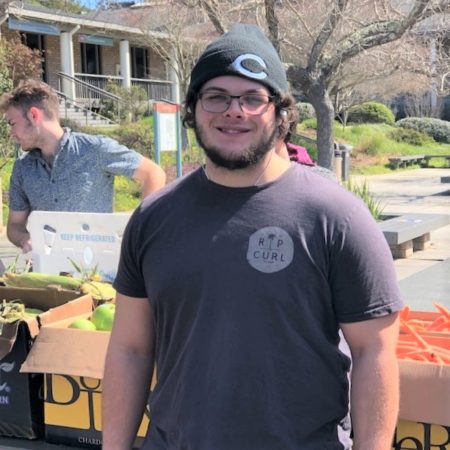
“This market really helps me out because everything in Santa Cruz is so expensive. I wish it was here every week.”
Three students from the Medical Assisting Program, Jessica Guardino, Shivawn Murphy, and Greisy Cauich, walk up and join the line. They learned about the market from an announcement in their classroom.
As they survey the variety of vegetables displayed in the boxes, they smile and point at what they’d like to get. “This is my first time here,” says Shivawn Murphy, “and I’ll definitely be coming back.”
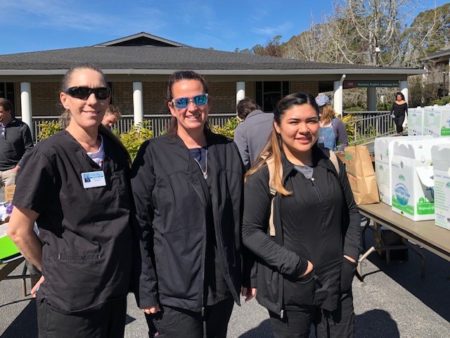
Carrie Shevchenko works in the Guardian Scholars Program and appreciates that the market is welcoming, convenient, and that the food is healthy and easy to eat, all serious considerations for the students she works with. “The Guardian Scholars Program is for anyone who has ever been in foster care,” says Carrie. “Being able to easily eat something nutritious that doesn’t require a can opener is really important to the students we work with.” Some of those students may be living in their cars or in an otherwise compromised housing situation.
60% of students surveyed were housing insecure, and nearly 20% were homeless the previous year. All colleges in the California Community College system, including Cabrillo College, allow homeless students to access shower facilities on campus. Pending legislation further aims to help homeless students by requiring community colleges to provide accessible overnight parking to any enrolled student in good standing.
Walking up to each person in line is Michelle Lee, a Community Outreach Specialist from Second Harvest Food Bank. She asks if they receive CalFresh benefits, the Supplemental Nutrition Assistance Program (nationally known as “SNAP”, formerly called “food stamps”) that helps to access healthy food. If visitors to the Fresh Market financially qualify for CalFresh, Michelle can help sign them up while they wait. Students may be eligible for CalFresh if they meet ONE of the following criteria:
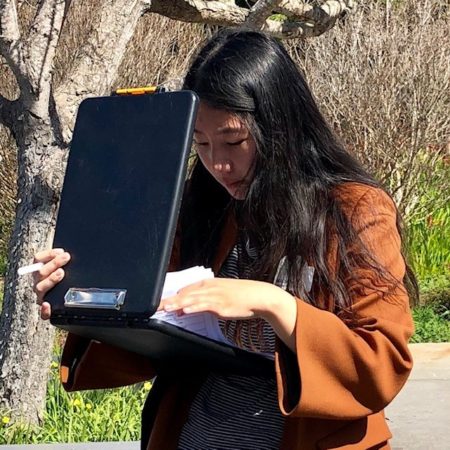
- They have been approved for work study
- They are currently enrolled in EOPS or WIOA programs
- They work at least 20 hours per week
- They attend school at least half-time
- They are between the ages of 18 and 49 years old
- They are the parent of a child under 12 years old
In another part of the line, Karen Reyes hands a group of students a pen and a clipboard which holds a stack of short surveys. “Please take a survey and fill it out for us. It can be anonymous or not. It’s totally up to you.”
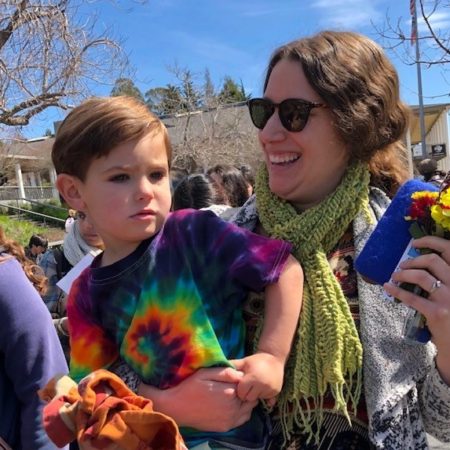
The survey asks Fresh Market visitors if they have ever been to the market before and finds that 70% are brand new. “This means our outreach efforts are working,” says Karen with a big grin. The survey also asks about CalFresh and finds that more than a quarter of those surveyed are receiving benefits.
A young man going through the line puts some carrots and corn in a grocery bag. As he leaves the market, he takes out a carrot and eats it as he heads to class.
“We could just give away pre-packaged bags of food instead, but the farmers’ market is so much better,” says Joel Campos. “When people are given a choice as to what foods they’d like and how much they want to get, this method fosters a sense of dignity. It becomes much more like shopping and less like receiving a “free handout”. It’s more convenient, too. Hauling around a large bag of food — which can be very heavy and cumbersome when you’re trying to study or make it across campus — can also make students feel self-conscious about receiving assistance. The farmers’ market-style of distribution helps to remove that stigma.”
Dejon Weldon, Program Coordinator of the Guardian Scholars, talks about some of the challenges students can face. “Some of our students don’t have a place to cook, or if they do, it might be a little difficult. For instance, one of our students saw that the Fresh Market was offering bell peppers and she really liked stuffed bell peppers, but she didn’t have an oven. She found a recipe and turned it into “Stuffed Bell Pepper Soup” instead, and shared it with the other students. Everyone really enjoyed it.”
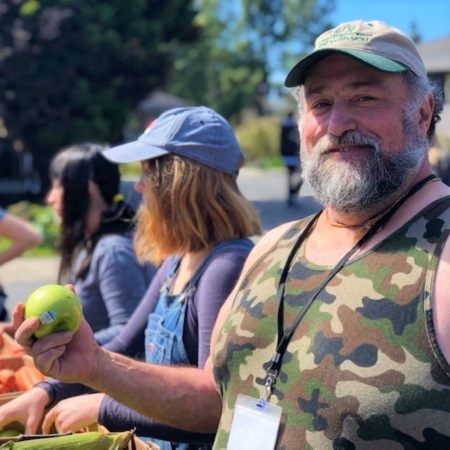
The availability of free fresh produce — which can be a luxury for many people due to cost – inspires new dishes all around. Student volunteer Steve Enriquez, president of the Music Club Cooperative, works at the market because he likes being involved in his school’s community. “I’ve met some great people at this market, including the president of the Vegan Club,” says Steve. “Now we’re getting together because we both like to cook and share recipes, and we want to collaborate on a cookbook”.
Cabrillo’s Fresh Market is open to students, staff and faculty on the 2nd and 4th Thursday of each month beginning at 11:30 AM in the upper quad. Shopping bags are limited, so please bring your own if you can.
